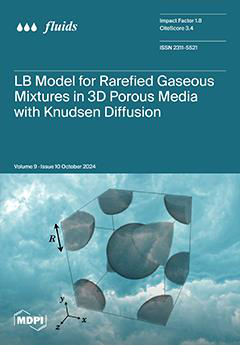Background: In the research of coronary artery disease, the precise initial injury that starts the atherosclerotic cascade remains unidentified. Moreover, the mechanisms governing the progression or regression of coronary plaque are not yet fully understood. Based on the concept that the cardiovascular system is a network of pumps and pipes, could fluid mechanics principles and practices elucidate the question of atherosclerosis using flow dynamics images from a novel angiographic technique, focusing on antegrade and retrograde flows and their collisions in iliac and coronary arteries?
Methods: From January 2023 to May 2024, coronary angiograms of all hemodynamically stable patients with stable or unstable angina were screened. The angiograms displaying either no lesions (normal) or mild-to-moderate lesions were selected. Each patient underwent an evaluation of flow dynamics and arterial phenomena in both iliac and right coronary arteries. For each artery, data were categorized based on the following parameters: laminar versus non-laminar flow, presence versus absence of collisions, and presence versus absence of retrograde flow. Additionally, in two sub-studies, we analyzed the relationship between retrograde flow and blood pressure, and artificial intelligence algorithms were used to detect the retrograde flow in the right coronary artery.
Results: A total of 95 patients were screened, and 51 were included in this study. The results comprised quantitative data (prevalence of laminar flows, collisions, and retrograde flows) and qualitative data (morphological characteristics of antegrade laminar flow, retrograde contrast flow, and instances of flow collision). The results showed that in the iliac artery, laminar flow was observed in 47.06% (24/51) of cases, with collisions noted in 23.53% (12/51). Retrograde flow was present in 47.06% (24/51) of cases, and notably, 75% (18/24) of these cases were associated with uncontrolled diastolic blood pressure (DBP) above 80 mmHg (
p < 0.001). Conversely, in the RCA, laminar flow was observed in 54.9% (28/51) of cases, with collisions noted in only 3.92% (2/51). Retrograde flow was identified in 7.84% (4/51) of cases, and all these cases (100%, 4/4) were associated with uncontrolled systolic blood pressure (SBP) above 120 mmHg, though statistical significance was not reached due to the small sample size (
p > 0.05).
Conclusions: Based on the concept that the cardiovascular system is a network of pumps and pipes, this research methodology provides intriguing insights into arterial flow behaviors by integrating fluid mechanics practices with novel angiographic observations. The preliminary results of this study identified laminar flow as the predominant pattern, with retrograde flow and collisions occurring infrequently. The implications of vortex, collision, and disorganized flow highlight potential mechanisms for endothelial damage and atherosclerosis initiation. Moreover, the correlation with blood pressure underscores the critical role of hypertension management in preventing adverse hemodynamic events. Future directions include refining imaging techniques and further exploring the mechanistic links between flow dynamics and vascular pathophysiology to enhance diagnostic and therapeutic strategies for cardiovascular diseases.
Full article





